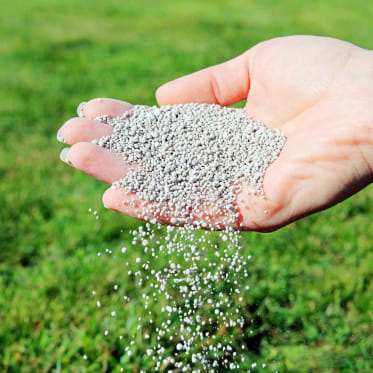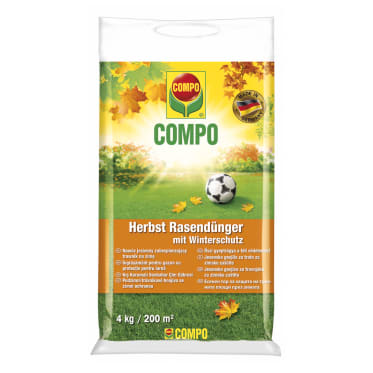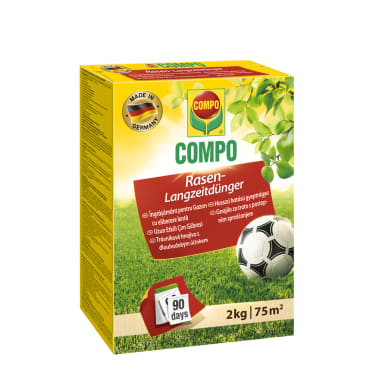Frequent search terms
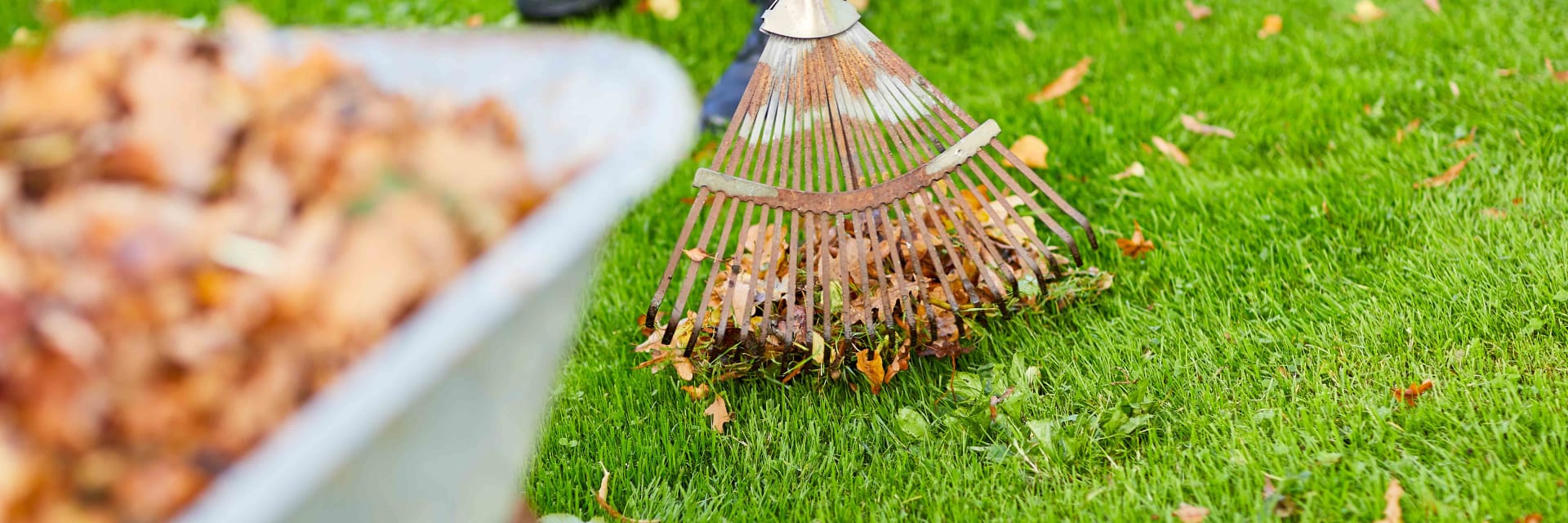
- COMPO
- Guide
- Plant Care
- Lawns
- Fertilisation and weed control
- Fertilising lawns in the autumn
A healthy and beautiful lawn in the spring
Fertilising lawns in the autumn
Even though lying on the couch might seem preferable to trudging around the garden in a pair of wellies on a cloudy autumn day, some gardening chores still need to be done in the autumn. To help it to survive the frosty winter and allow you to look forward to a lush green lawn next spring, it's advisable to feed your plants with some additional nutrients. Read on to discover why you should fertilise your lawn in the autumn and how to make it healthy enough to survive the winter without any problems.
Table of content

The last fertilisation before winter
How beneficial is lawn fertilisation in the autumn?
Good preparation is everything! If a garden owner loves the thought of a lush green lawn in the spring, fertilising is an integral part of autumn lawn care. But the aim here isn't to stimulate the growth of the grasses. Instead, it's a case of preparing the lawn for the winter and repairing any damage caused by heat or dryness, for example. Autumn fertilisation gives your lawn its last supply of nutrients before it goes into hibernation. This makes the lawn more resistant to diseases and frosty weather because the additional fertilisation strengthens the cells and supplies the lawn with sufficient nutrients even during the winter.
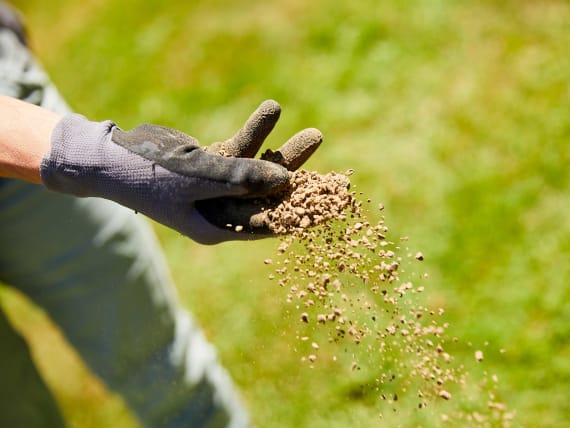
What's so special about autumn lawn fertiliser?
Potassium-rich fertiliser
We've all been there... Your personal care routine isn't the same in the autumn as it is in the summer. It's similar with lawn care. Soil needs a different nutrient mix in the autumn than it does during the summer months. When it comes to nutrients, lawns crave potassium in the autumn more than almost anything else. It makes your lawn more winter hardy and protects it from frost and diseases. Accordingly, a potassium-rich fertiliser is especially important when fertilising a lawn in the autumn. Apart from potassium, a high-quality autumn fertiliser will also contain other nutrients, like nitrogen and phosphate, which strengthen the plant cells and roots, thus ensuring a resilient lawn. This makes it almost impossible for weeds to take hold. Compared to a spring fertiliser, autumn fertiliser contains less nitrogen because fertilisers that contain a lot of nitrogen stimulate growth, which is not needed in the autumn. The high nitrogen content would make the grass in your lawn soft and thus also more susceptible to frost and diseases. To help your lawn develop into a magnificent green space next year, we recommend that you use a potassium-rich NPK fertiliser.

Late summer or winter?
The best time to fertilise lawns in the autumn
But when is the best time to fertilise lawns in the autumn? The period of application mainly depends on whether you use an mineral or organic fertiliser.
Organic fertilisers are animal- and/or plant-based. For the nutrients from an organic fertiliser to become available to plants, they must first be broken down by microorganisms in the soil. These nutrients are slowly released into the soil over an extended period. If it's too cold, too hot or too dry, the microorganisms are sluggish and have hardly any effect. Accordingly, the perfect time for an organic lawn fertiliser is from the beginning of August to the end of October when the soil is still warm and the microorganisms can turn the fertiliser into a form plants can absorb. In cooler areas, such as the peri-Alpine region, fertilisation can take place earlier than in mild areas. Since organic fertilisers are plant- and/or animal-based, they are safe for children, animals and the environment when used correctly.
If you opt for a mineral fertiliser, it is advisable to use it as late as possible. Our recommended application period is from September to December. The nutrient components of mineral fertilisers are structured so that your lawn can even absorb them at soil temperatures of around 10 °C. Mineral fertilisers dissolve due to the moisture in the soil, enabling plants to absorb the nutrients immediately.
The right preparation
How to fertilise your lawn in the autumn
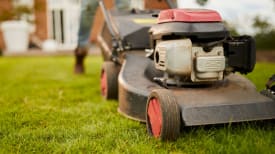
1
Mowing
Before you fertilise your lawn in the autumn, clear away any branches or foliage if necessary. To prevent the granules from getting caught in the blades of grass, it is extremely important that you mow the lawn before spreading the fertiliser. We recommend that you cut the lawn to 5 cm maximum. Having said that, the grasses shouldn't be too long, either, or they will break off when it's frosty. A cutting length of about 6 cm is ideal. Another lawn care tip for you to bear in mind is that the lawn needs to be mowed until it stops growing. For example, in mild, sunny autumn weather you may still have to get the mower out of the garage in December.

2
Fertilisation
Then give the grasses two to three days so that the cuts caused by mowing can heal and to prevent any scorching. After that, distribute the autumn fertiliser with a spreader or by hand. For all the perfectionists among we gardening enthusiasts: Use a spreader to distribute the autumn fertiliser especially evenly so that you can enjoy a lawn that is a beautiful lush green throughout.

3
Watering
Regular watering is an important part of the lawn care routine – and this is especially true for the time after fertilisation. The lawn must be watered generously until the granules have completely dissolved and the nutrients are absorbed. This applies to both organic and mineral fertilisers. There's no need to worry about your pets or children once the granules have dissolved completely – the lawn can be used immediately afterwards.
Featuring lawn expert Werner
Fertilising lawns in the autumn: Timing and mode of action | Slow-release autumn lawn fertilisers
More information about your lawn
Suitable products for fertilising your lawn






